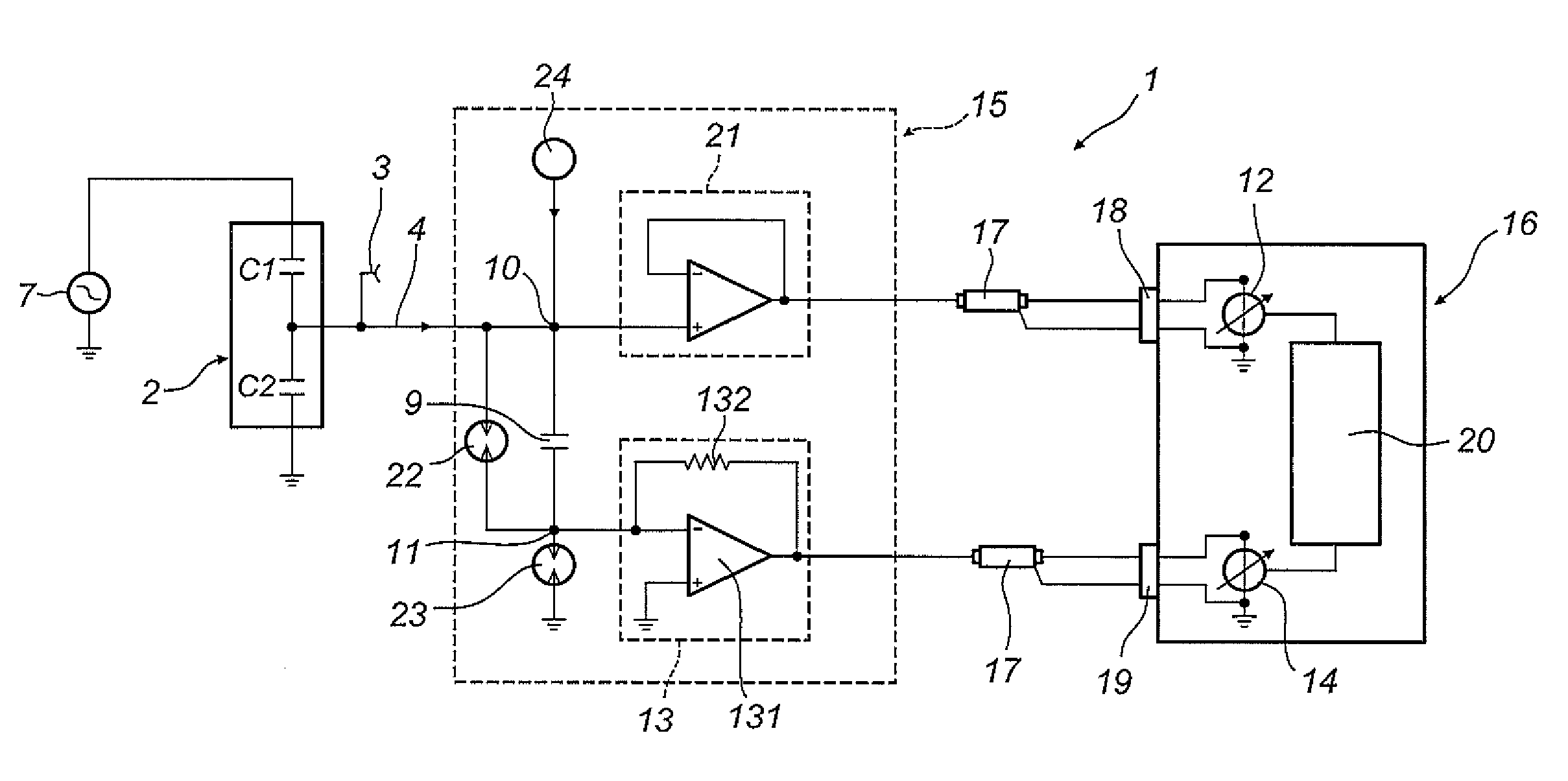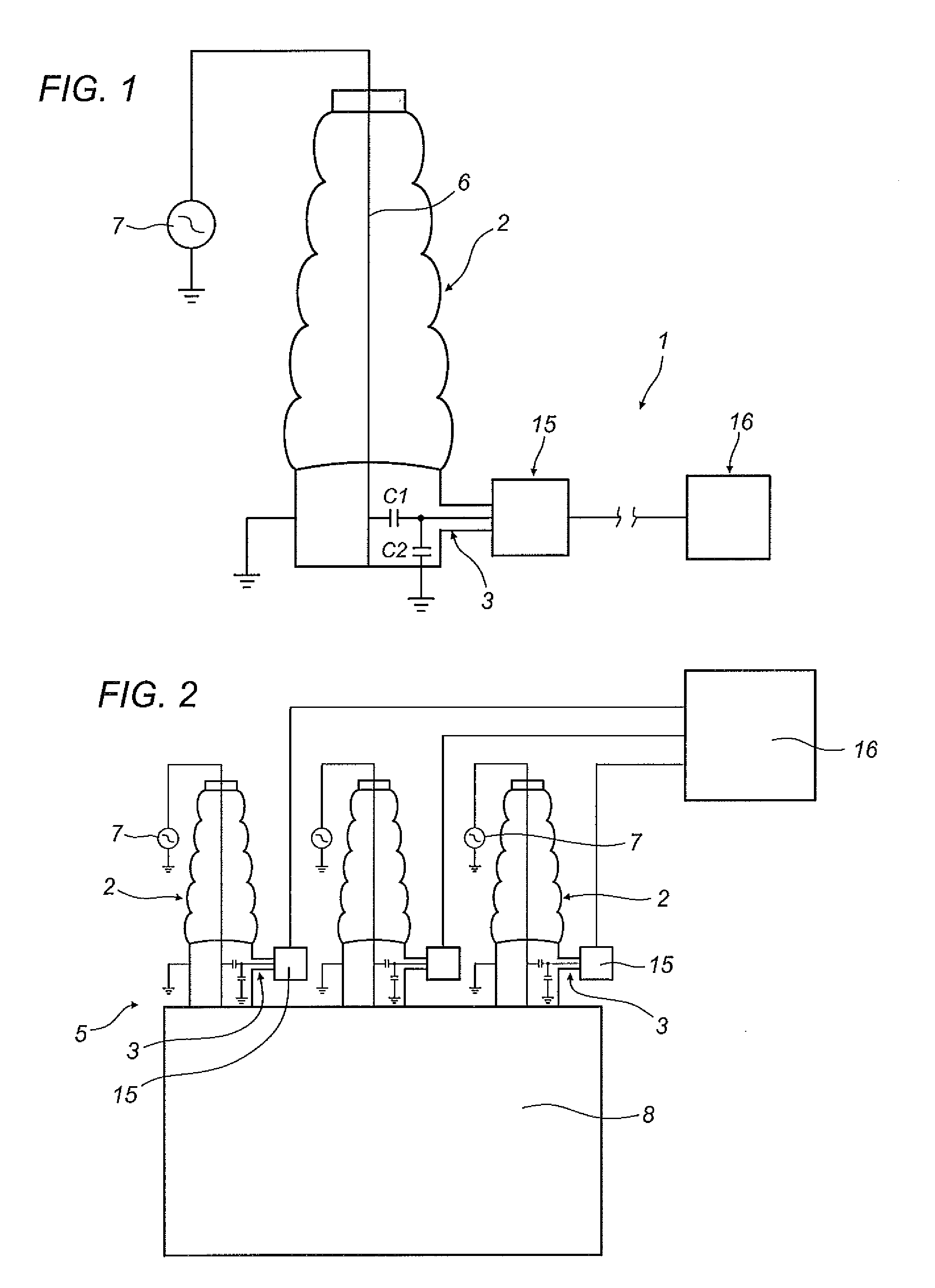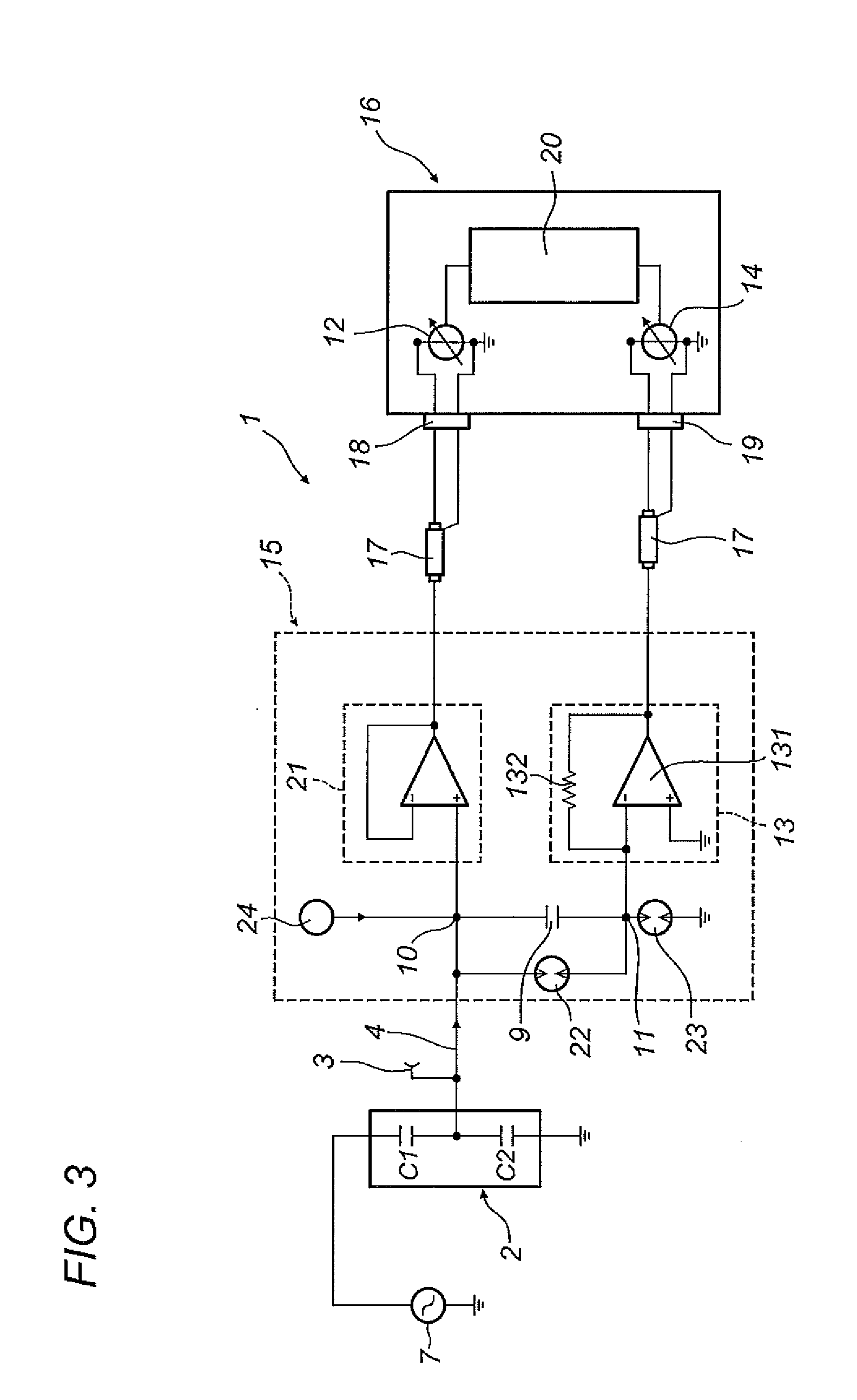Apparatus and method for measuring the dissipation factor of an insulator
a technology of dissipation factor and insulator, which is applied in the direction of dielectric property measurement, emergency protective arrangements for limiting excess voltage/current, instruments, etc., can solve the problems of narrowing the detection bandwidth of the sensor, reducing the accuracy of measuring, and not allowing detection of any signal indicating. , to achieve the effect of good estimation of the loss factor
- Summary
- Abstract
- Description
- Claims
- Application Information
AI Technical Summary
Benefits of technology
Problems solved by technology
Method used
Image
Examples
Embodiment Construction
[0065]The numeral 1 in the drawings denotes an apparatus for measuring the loss factor (also known as tan delta, or power factor, or loss tangent) of an insulator 2 for medium or high voltages.
[0066]More specifically, the insulator 2 is an insulator equipped with a tap adapter 3 forming a point for picking up an electrical signal 4.
[0067]In a preferred application of this invention, the apparatus 1 is an apparatus for measuring the loss factor of an insulator 2 of a medium- or high-voltage transformer 5.
[0068]FIG. 2 illustrates a three-phase transformer 5 having three medium- or high-voltage insulators 2 the apparatus 1 is coupled to.
[0069]The reference C1 denotes a capacitor corresponding to the insulator 2 being tested, while C2 denotes an eddy capacitor formed by the tap adapter.
[0070]The insulator 2 is designed to insulate a conductor 6 connected to a medium- or high-voltage source 7 relative to a body 8 connected to earth (for example the casing of a transformer).
[0071]The insu...
PUM
 Login to View More
Login to View More Abstract
Description
Claims
Application Information
 Login to View More
Login to View More - R&D
- Intellectual Property
- Life Sciences
- Materials
- Tech Scout
- Unparalleled Data Quality
- Higher Quality Content
- 60% Fewer Hallucinations
Browse by: Latest US Patents, China's latest patents, Technical Efficacy Thesaurus, Application Domain, Technology Topic, Popular Technical Reports.
© 2025 PatSnap. All rights reserved.Legal|Privacy policy|Modern Slavery Act Transparency Statement|Sitemap|About US| Contact US: help@patsnap.com



